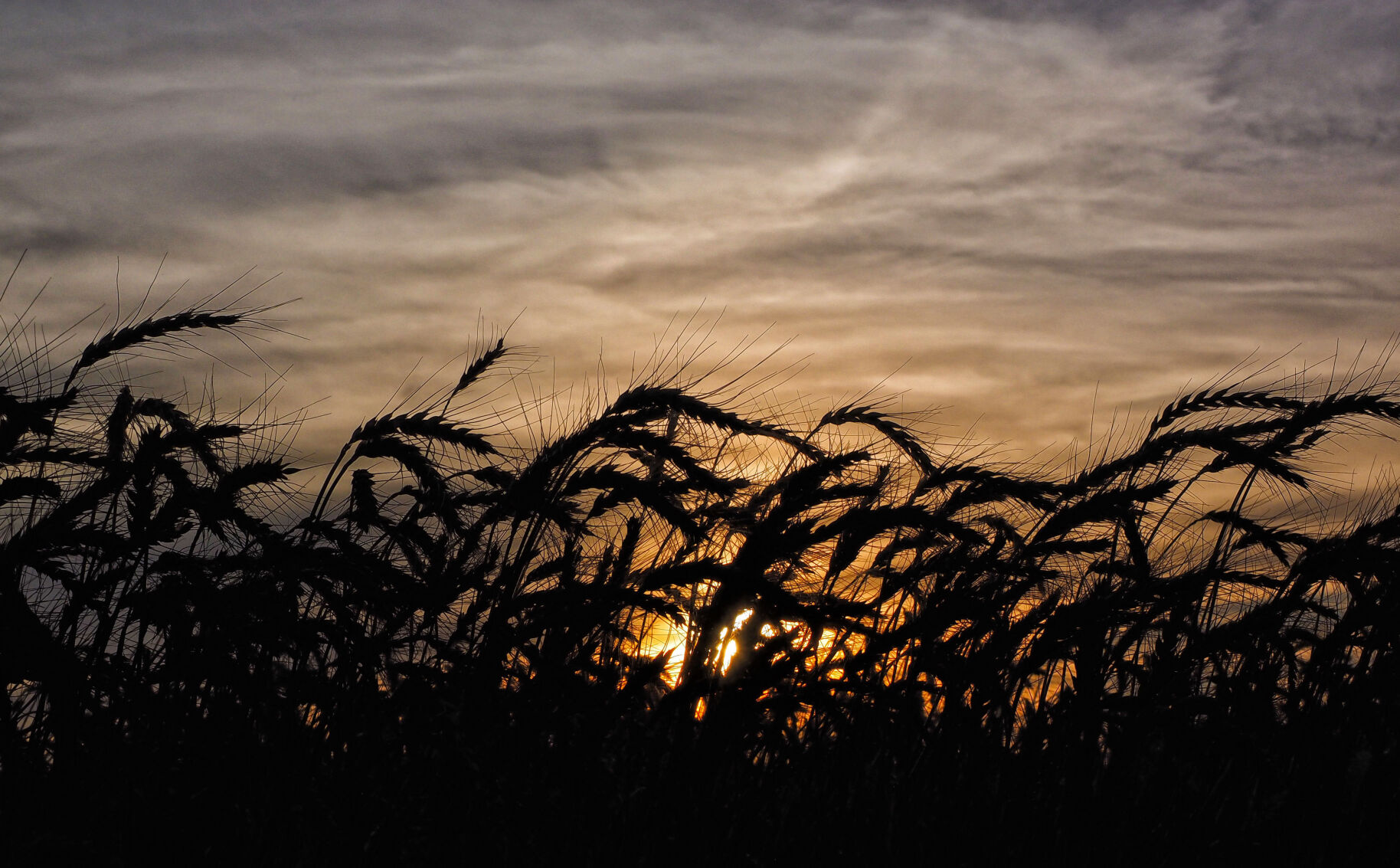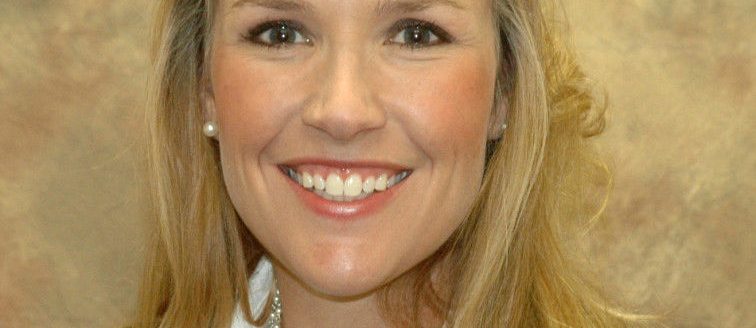Having weeds in wheat is nothing new for farmers in Oklahoma and Kansas. Misha Manuchehri, Oklahoma State University Extension weed specialist, told attendees at Farmer U and Trade Show, in Mulvane, Kansas, this past summer that weed control is often difficult to achieve.
“And I think I have learned that it’s something that’s very difficult to do, especially on the long term,” she said. “Short term we can manage weeds pretty well with herbicides, but long term we typically are running into herbicide resistance issues.”
In Manuchehri’s session, she focused on winter annual grasses affecting wheat stands and gave her thoughts on what herbicides to use to help control them. First she discussed brome weeds, or what is most commonly referred to as cheat. There are a variety of species of this type, and all respond to herbicides differently.
“It is nice to know what species we have when they’re in the seedling stage,” she said. “It is difficult to ID them; they often look fairly similar and so I try to encourage around harvest or when we do have this inflorescence to identify our weeds then and find out what we’re dealing with.”
When there’s a problem in the season, she suggests using that experience to plan for the upcoming season.
“Not that we can’t ID at the seedling stage, it’s just challenging,” Manuchehri said.
Downy bromes are common in roadside weedy areas, but farther north in Oklahoma it does tend to get into some crop areas. Other bromes, like Japanese brome, tend to dominate in wheat fields and currently there’s not much herbicide resistance developed for these species.
“So we can get away with an early fall or very early spring application of something like PowerFlex or Outrider,” she said.
Species like true cheat and rescuegrass can be troublesome. True cheat has a tendency to get above the wheat and has seed heads.
“So why are these plants difficult to kill in our wheat?” she said. “It is because of resistance.”
She’s not seeing much resistance in rescue grass, but it doesn’t respond very well to herbicides. Biologically, that’s the way the plant is built, she said.
“It was brought into the United States as a forage at one time,” Manuchehri said. “So if you have dual purpose ground or you’re grazing your ground, this might be a plant you’re OK with, but if you’re anywhere you might think about taking off your wheat these are plants that you’re not going to want to have in your field.”
Rescuegrass is increasing in numbers, but if it’s not in your field at some point it might be.
“If you delay your planting—which I know we can’t always do that—but if you’re grain only and you have some flexibility in planting, I do recommend doing a burn down, or some kind of tillage operation and controlling some of this stand, before you go in,” she said. “That can be an effective strategy.”
With rescuegrass she uses the term tolerance instead of herbicide resistance because the herbicides used on this plant were never very effective. She has a graduate student looking at the concept of delaying planting dates from northern Oklahoma to northern Texas, and they haven’t found all the answers yet. They have come up with more questions.
“I think we are seeing that a delay in several weeks is effective,” she said. “If you’re OK with not having that early season forage.”
When the planting starts to get later in the season, there might start to be a decline in yield, but that could be mitigated with an earlier season nitrogen application. Manuchehri typically splits nitrogen applications with a third up front and two-thirds in the spring.
“Again, I think we’re learning we haven’t quite figured out everything we want to, but a delay does help with this particular species,” she said.
New strategy
Manuchehri has been looking at CoAXium wheat production systems, a new herbicide tolerant wheat.
“We’ve had Clearfield wheat for over two decades now and this is our new system,” she said. “This technology was developed by Colorado Wheat Research Foundation and Lima Grain Cereal. Those are the partners that came together to develop it, the trait is called Axigen.”
Any variety with the trait will end in an –ax, and the herbicide used is quizalofop—trade name Aggressor.
“This isn’t a new herbicide,” she said. “This is a herbicide we’ve had for quite some time. If you’ve ever sprayed something like Assure 2, that is was quizalofop, or if you’ve ever spraying something like Select or Post. Those are all in the same family.”
The herbicide kills grasses post emergence with no soil activity. Manuchehri said some farmers may have sprayed a broadleaf crop like sesame, cotton or soybeans, or even something they couldn’t use glyphosate on, but still kill the grasses.
“That’s what that type of family does,” she said. “And when we look at control with this new technology and we have to remember it’s, it’s an investment.”
The price of CoAXium is very similar to Clearfield and the control looks great.
Feral rye is still a problem for Oklahoma wheat producers, and if growers are rotating fields, it’s probably something they are able to clean up since the longevity in some Oklahoma soils isn’t that long.
Manuchehri is working on trials of the CoAxium system against non-treated and other herbicide applications to wheat, as well as multiple application timings, grades and surfactants. The CoAxium looks “pretty clean,” she said.
But one of the downsides of the new technology in the system is there are some trade offs. There is a possibility of injury if there’s late spring applications. Look at the Agressor label—it will say not to apply past jointing.
“I understand sometimes, there’s a lot of ground that needs to be sprayed, it’s too wet to get in the field,” she said. “I understand all of that, but I don’t because I don’t spray as much ground as you all spray.”
But injury could happen. Manuchehri said when going out with fall applications, be mindful of anything following Aggressor.
“Yield looks fairly good for our area. These are pretty decent yields,” she said. “Early spring maybe start to see a little bit of a reduction, but not too bad.”
Most of the complaints she gets about the system are after green up and closer to jointing.
“When you’re spending that much money on a trait, you do not want this to happen,” she said. “So I would just caution you, if you aren’t getting to make a fall application or be very careful right when you see your wheat start to turn and temperatures start to warm you need to go with the herbicide application in this particular system.”
Manuchehri said to keep in mind all her work is on small plots, so “it’s not perfect.” Application can be done aerially with Aggressor.
“If you’re waiting until the spring, and you’re working with maybe a representative with the technology, they’re going to tell you, you need to up your carrier volume for coverage,” she said. “And you need to up your rate.”
That’s all great, unless you’re pushing jointing and on a higher rate of herbicide, then it’s not good.
“But I guess an aerial application could help when you can’t get into the field with the ground rig and want to push towards that late fall, early spring,” she said.
Broadleaves
Horseweed or marestail is one variety of weed Manuchehri typically gets asked about controlling at harvest time. Once it’s been seen in the wheat, come up with a plan for next season and make applications in the fall and early spring.
“Really early spring will be much more successful because these harvest seed treatments just they don’t do a whole lot,” she said. “They’re burning down that plant so we can get equipment in the field. I would hardly call them a weed control strategy, but I know sometimes you do need to make those applications.”
Many harvest aid options—Roundup, Ally, 2,4-D—have horseweed control below 50%, and that really depends on presence or absence of glyphosate resistance. In one of her test plot locations, she didn’t have as many plants that were glyphosate resistant.
“That’s just going to depend on your system,” she said. “I would say in Oklahoma and probably in your states to glyphosate resistant horseweed or marestail is pretty widespread.”
Manuchehri said if you’re someone who likes to spray Finesse plus MCPA to pick up broadleaves, Finesse might be a product that could have no control of horseweed if there is any resistance to glyphosate. Same for Ally or Glean since those two are components that make up Finesse.
“I don’t want to completely take away from Finesse. I still think it’s a herbicide that’s doing a good job on many of our broadleaves,” she said. “And for how cheap it is, I think we want to know which broadleaves those are.”
Take-home message
When discussing bromy grasses, Manuchehri believes producers are still doing an OK job controlling many of them, but more could be done.
“We need to target with fall application timing,” she said. “We can move to herbicide tolerant traits like Clearfield and CoAXium. But if we move to those traits, I would make sure you have weed species like rescue grass, true cheat like feral rye. If you have Italian ryegrass it makes no sense to go to those herbicide tolerant packages.”
Again, if there’s ryegrass, Manuchehri urges an application of that delayed pre-timing. Keep in mind the group one herbicide resistance that’s developing as more and more is sprayed.
“We’re just going to want to be very careful of using that product we know when we have a herbicide that works really well, we develop resistance for it very quickly,” she said.
As for the broadleaves, synthetic options—2-4,D, dicamba and MCPA are still doing a good job on winter crops.
“And our winter crops, not much resistance that we have to make an application when weeds are small,” she said. “That two- to four-inch timing is really ideal.”
Her last point was herbicides are really just a short-term management strategy.
“In Oklahoma, we only harvest half of our wheat that we plant, and the diversity in our systems comes from animals,” she said. “So we do have diversity, it’s just not in crops. And so it can be very challenging when you have weeds adapt to a particular crop that you plant year in and year out.”
It can be very difficult to manage those plants, so long term rotation is a better strategy if that’s something that can be fit into an operation.
Kylene Scott can be reached at 620-227-1804 or [email protected].




